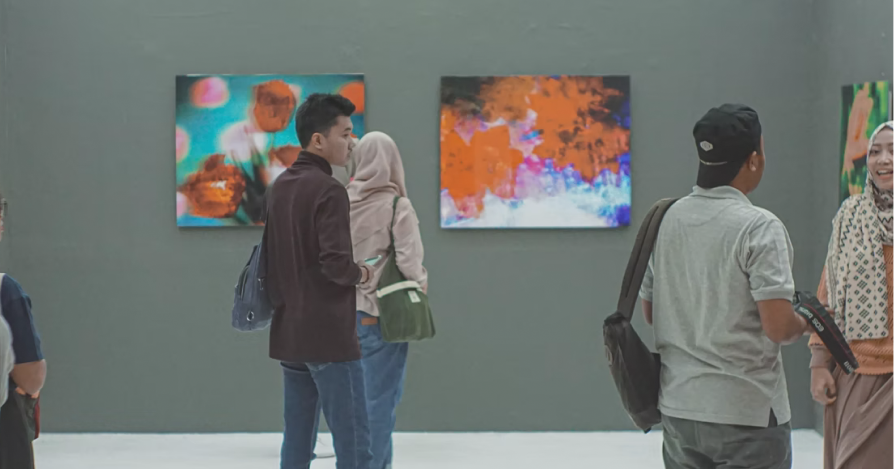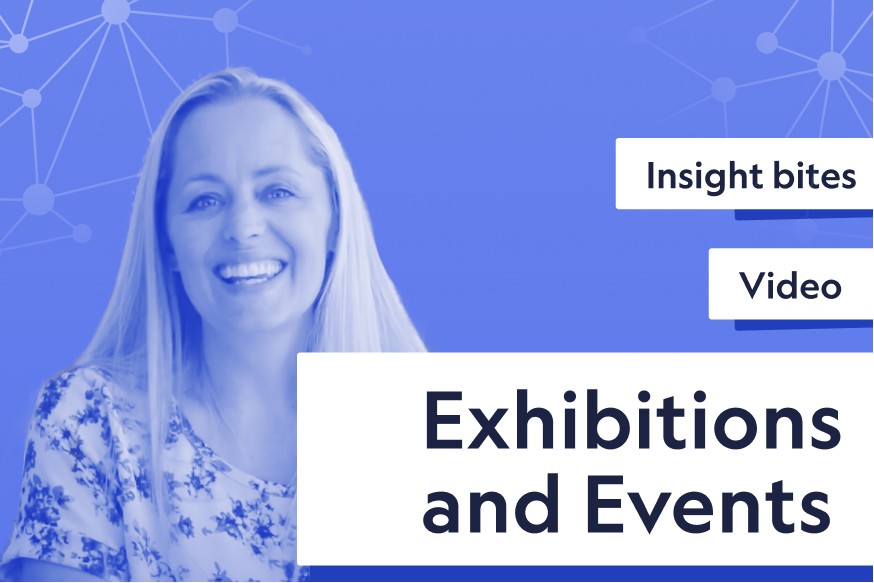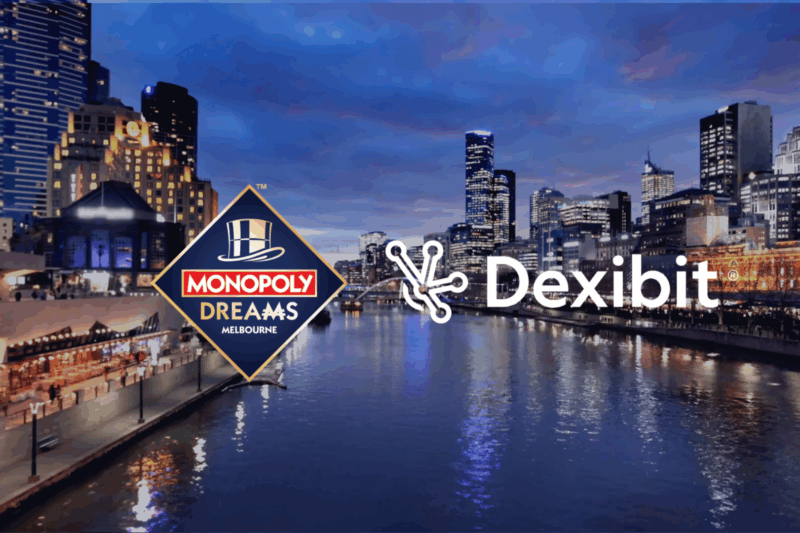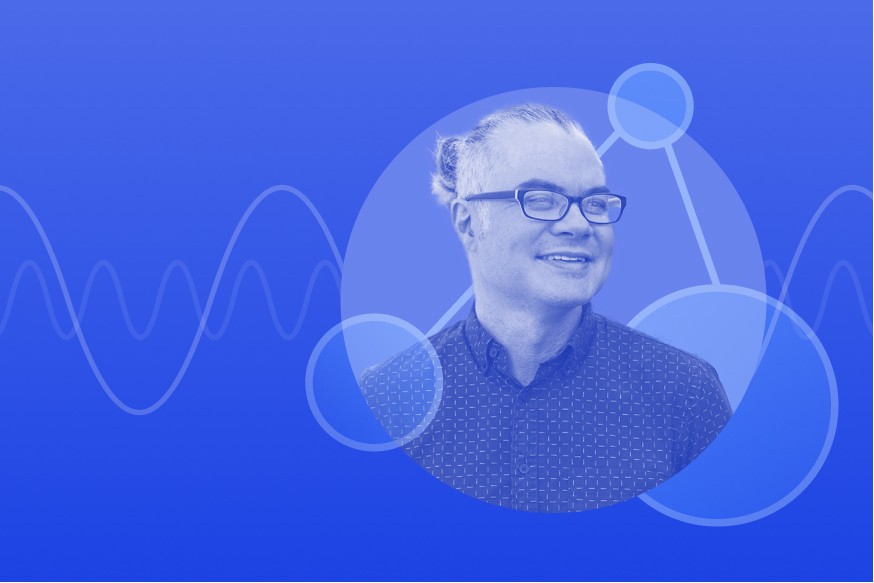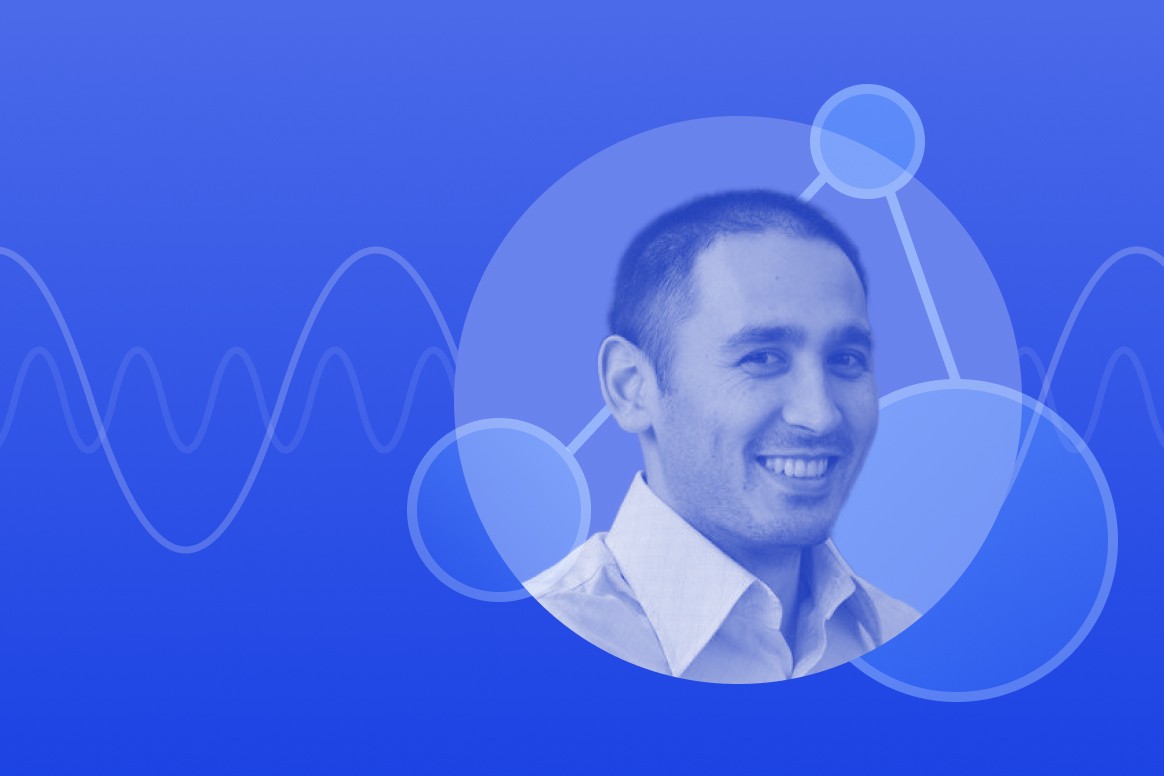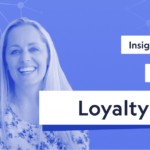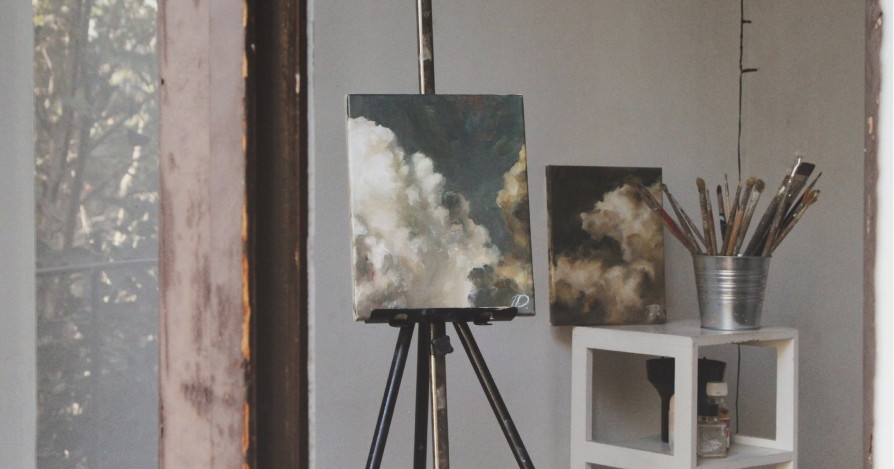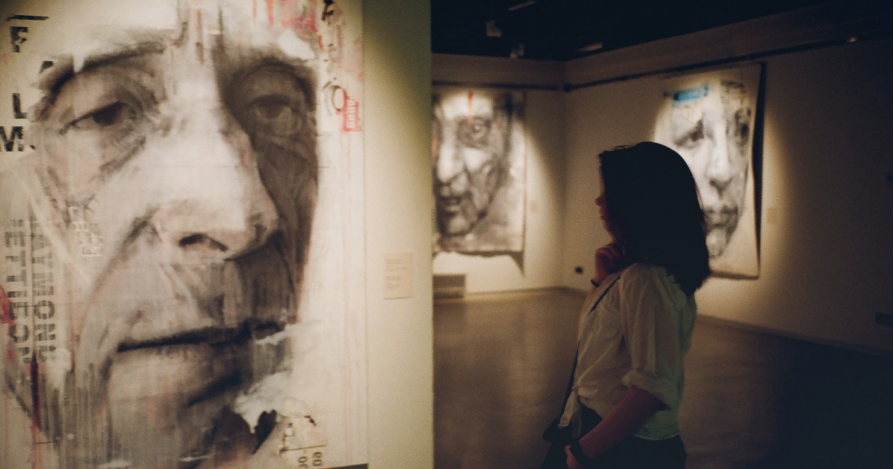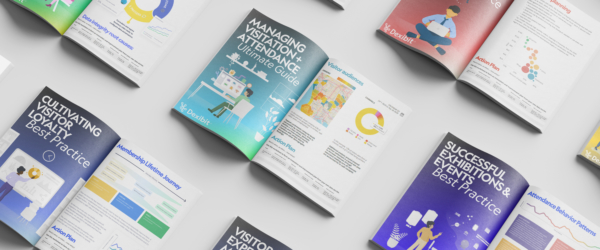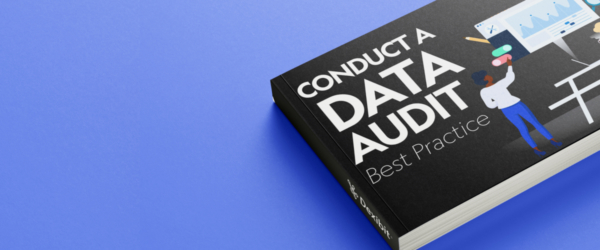When it comes to exhibitions, ‘performance’ is a debatable term – it’s not just about topline performance. Analyze simulations and plans.
Continue readingInsight Bites: Exhibitions and Events
Insight Bites: Exhibitions and Events
- Posted on
Recording attendance for activities
Options plus a few tips and tricks for how to count visitors in terms of activity attendance and conversion for exhibitions, experiences and events.
Analyzing visitor behavior curves
When does your Fear Of Mission Out (FOMO) behavior typically kick in for your visitors? Find out how to plan ahead for marketing, scheduling and wane.
Simulating exhibitions and more
In a world first, see how Dexibit simulates performance for exhibitions to optimize the schedule and marketing mix for visitation versus revenue.
Want to learn more about Dexibit?
Talk to one of our team to hear more about bringing big data analytics to your visitor attraction
Featured Resources
Discover industry leading resources for visitor attractions professionals
Creating Successful Exhibitions and Events
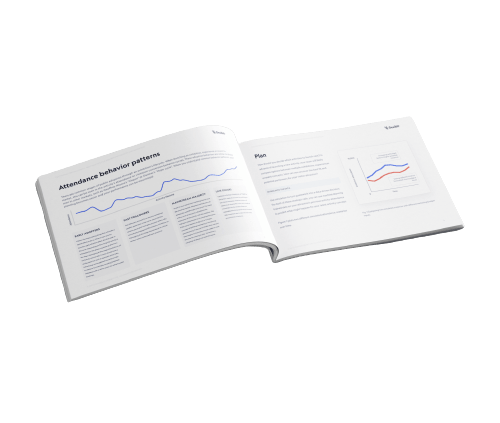
Creating Successful Exhibitions and Events
Ensure your strategic planning leads to a successful launch and delivery
Based on the successful tactics of our customers, this playbook contains winning strategies for fulfilling programs.
Explore key metrics to measure exhibitions and events. Continuously plan, execute and evaluate for engaging and meaningful programs for your visitors.
What's inside:
With this playbook, lead your team to:
- Develop a best practice model for tracking exhibition or event timeline
- Align with your visitors’ attendance behavior pattern to meet them where they are in the cycle
- Uncover what leads to optimizing visitation uplift
- Target improvements for enhanced exhibitions outcomes

Discover how to optimize your exhibitions and events:
The ammunition for blockbuster exhibitions
Want to learn more about Dexibit?
Talk to one of our team to hear more about predicting and analyzing visitor behavior for retail revenue
Platforms for visitor superpowers with Sebastian Chan
Platforms for visitor superpowers with Sebastian Chan
- Posted on
Seb Chan, Chief Experience Officer at the Australian Centre for the Moving Image (ACMI) discusses the evolution of how we think about visitor experience in experiential spaces, going beyond traditional engagement to cross creative and infrastructural elements. Seb covers ACMI’s redevelopment, a unique approach to staff restructure, establishing the museum as a platform and its technologies including the Experience Operating System (xOS) and the Lens: the ingredients which set the ACMI team to make the most of a terrible opportunity in coping with the pandemic.
Show notes
For more on the Lens, visit www.acmi.net.au/lens/
A pavlova recipe courtesy Seb’s Mum https://www.sebchan.com/never-fail-new-zealand-pavlova-recipe
Watch for more on The Lens at the Australian Centre for the Moving Image (ACMI) that Seb discusses in this episode.
Transcript
Angie: Hello, and welcome to the Data Diaries. I’m Angie Judge from Dexibit and here with us today, we have Seb Chan, Chief Experience Officer at the Australian Center for the Moving Image, a big welcome to Seb.
But before we start, I’m going to get this out there. You could be forgiven for assuming that Seb is Australian: he’s based in Melbourne, he serves as the Adjunct Professor at the School of Media and Communications at the College of Design and Social Context at RMIT plus he’s on the board of the National Communications Museum in Melbourne and is the national president of the Australian Museums and Galleries Association. And I should add outside of Australia, also an advisory board member of Art Science Museum in Singapore, too.
And many of our listeners will be familiar with Seb’s earlier digital transformation work at the Powerhouse in Sydney. And of course, between Sydney and Melbourne, he then jetted to New York to lead the digital renewal and transformation of Cooper Hewitt, Smithsonian Design Museum, in New York, including the very well known ‘pen’ experience. But Seb is actually a kiwi like me from New Zealand and we New Zealanders are very sensitive about things that are mistakenly claimed as Australian, like Crowded House and Russell Crowe and Pavlova. So I just needed to get the record on that straight first.
So Seb, you pretty much invented the Chief Experience Officer or the CXO role for visitor attractions. And so many people have now followed in your footsteps, especially in this era of the experience economy. What trends in the sector brought about that need on the leadership team and how has the role evolved for you in the years?
Seb: Yeah, it’s interesting. When my role was called the CXO role, it was really an acknowledgement that museums and galleries were primarily experiential spaces. That now sounds ridiculous that we didn’t think they were before, but there was a moment I think when we were a little bit less sure about that, strangely enough.
And I think that sort of mid the early 2010s and certainly subsequent to 2015, it’s very rare to find senior museum people or boards that don’t feel that museum and gallery experiences are fully experiential things. Obviously we’ve got a long way to go with that in what that actually means in the production and the processes and your end curation.
But I think we were pretty clear. We operate as part of an experience economy and we don’t just need to follow in that sense too. The other thing that’s changed perhaps in my role, particularly, we did a restructure here in 2019 as a part of preparing to reopen, this was pre COVID. And that, restructure was a ground up restructure where the staff designed and voted for a new organizational structure. And it was interesting in that my role now pulls in a lot more teams than it did previously in that experiencing engagement division of the museum is one of the major divisions of the museum now.
And that means, the CXO role touches more of that visitor journey and more of the interactions visitors have, and also staff have with each other. And so that experience extends beyond the outward facing, but actually more seriously acknowledges the inward facing and the new opportunities that that brings. And that’s interaction, perhaps the more obvious end of things, around brand and communications.
Angie: I’m interested in coming back to this restructure a little bit later in our conversation, because it’s a fascinating thing what you’re doing with the team there, but I’ve never really thought about it like that, how you talk about this new age of the experience experiential space. I’ve certainly heard the argument played out: ‘are we here first for the collection or the visitor’, but I’ve never really had that takeaway that you’ve shone a light on for me about this shift and in the leadership space of visitor attractions and museums of there being a time when, regardless of which one of those things comes first, we even didn’t consider the experience of the space.
Seb: Yeah, it’s interesting isn’t it? I think part of the sort of realization and the way particularly museums and galleries have seen themselves as part of cities and have had stronger relationships with city governments, and then other, other levels of government too, and planning and urban planning and that sort of thing. Being part of the revitalization of cities, the whole ‘Bilbao effect’ and all of that was happening for years, decades, in fact. The experience economy phrase comes out of the 1990s, but at some point that that flipped over into the way museums work with curation and collections to, and perhaps it dates back to the period when there was that switch from visitors not being allowed to take photos in museums, and then suddenly they are, maybe it does date to really the birth of mobile and smartphones in museums that really seals the deal. I often also think in other media, the way that fan cultures and audience participation is now built into the way major film, feature, feature films, and other ‘IP properties’, for want of a better word, are designed and made now. So, you can sort of draw a line, I guess, between the pre fan designed media and the post fan designed media. If we think about Marvel films, the way that they’re almost structured to engage fans beyond the moment, you’re actually watching the film itself, the content of the film is a small part of your engagement with that, in their world, the Marvel cinematic universe, which includes all that stuff around the fans and the stories fans tell to each other and share and all of those things. That was kind of not a thing, but it’s hard to imagine that, it’s a bit like it’s very hard to imagine the world before Wikipedia or the world before Google, or even sadly, a world without capitalism.
Angie: And I know this sort of cultural equivalent of fandom and how the experience plays into that, before, during, and after the visit to a physical venue, plays a really big into your philosophy around what it means to have an experience in a museum. But I’m glad you mentioned this trigger around digital and smartphones for this change of where we are now.
How do you actually see the CXO role itself fitting with the CDO or the Chief Digital Officer role we saw so much attention to emerging in the years prior?
Seb: Yeah. It’s interesting question. I think the CDO and the CXO in many ways merged, because digital is no longer as a separate thing, digital is part of experience and it’s part of the mission and purpose. I think the fading out of the CDO role that sort of occurred around, I guess, between 2013 to 2017, was really an acknowledgement that there isn’t a museum experience, there isn’t a museum, without digital, in any way. And you know, in my group, we have the ICT and the infrastructure side of things in my remit as well.
It’s interesting, the different ways we have discussions inside the institution and outside the institution in the CEO digital mentoring program that we’re running in Australia, this sort of sense around digital having an infrastructural element to it, but also a creative capacity element to it as well, alongside the notions of digital literacy and digital fluency. The infrastructural side, much as the, the materiality of IT, hasn’t gone away. There’s still rare earth metals. There are still, you know, the cloud as a series of server farms in warehouses in cheap real estate parts of the world. You know, it’s all that sort of stuff. There are pipes, there are cables, there are physical things that materiality, I think it’s starting to come back and we’re starting to think about the interplay between what museums and galleries and make possible as being constrained a little by that material. And needing staff, technically savvy staff who are aware of what that materiality means infrastructurally, but also then also staff who can see it in terms of capability and possibility in terms of experience.
And that that’s something that the CDO role, I guess, as emerging out of a CIO, role: the CIO was all the info, the hard IT side of things. The CDO was sort of a softer version of that. The CXO tries to marry those two. Often I do see a lot of CXO roles, newish CXO roles, sort of foregoing that in that infrastructural side, even though it probably plays a more significant part now than ever before. And certainly technical literacies haven’t gone away. They’re very important, even more so now with machine learning, actually understanding the technologies is a key part of being competent in the emerging world.
Angie: I was going to ask this question a little bit later on, but we keep on coming back to the cross-functional nature of your team and the necessity of that for the CXO role to be successful. And I know at ACMI, in addition to going through a redevelopment these past few years, it also underwent a simultaneous, bottom up staff led restructure that the staff themselves had voted for, which sounds very unique. And essentially from what I understand adopting this notion of cross-functional teams. So what has that been like?
Seb: Yeah, it was exciting and challenging. Katrina Sedgwick, our CEO and Director instigated that change. It was really, I think her way of acknowledging that the institution before redevelopment and after reopening were going to be different. And the staff led restructure was a way of signalling that and buying in ownership amongst the staff of ‘this is a new institution now, how do we need to operate it?’ So staff formed groups and came up with different models for executives and teams, and the like, and then proposed a series that were then voted on. And then that was taken to the executive and the board and with some tweaks, implemented. But it was really a way of signaling change and signaling that, we’d been through physical change and for some of us, programmatic changes for the curatorial staff, and those who work deep deeply with the renewal project, this programmatic change. And obviously alongside that, the technological shifts too. But then opening the building was bringing out the lived reality to all the stuff. That it was going to be a different museum. And it wasn’t a different museum that was static, but it was a museum that was starting with new opportunities to do different things that people who worked on the renewal hadn’t imagined, but we’re setting the stage for that to be possible.
If that makes sense. So it was sort of like birthing a new world. And then rather than that being seen as a static thing; as some something that needed people to buy into and then further develop. Which I think was really exciting and it has been really exciting. It’s helped a lot of the subsequent process change changes that we’re still working through since launch, with some of the old practices, systems and processes, ways of doing things, have become clear that they’ve needed to adjust both as a result of the new building and new opportunities that brings and the more diverse audiences we were attracting and the different needs they bring.
But also then also with COVID, we’ve been able to use this moment of change to work comparatively well with the challenges of the pandemic. But I think for us, we’re in a rather privileged and unique base where we’re already going through that change process anyway. We were already closed. And so it was about adjusting and making the most of a terrible opportunity.
Angie: We’ve certainly noticed ourselves an almost organic move to more agility, more urgency, in the way that a lot of cultural institutions in particular working at the moment. You mentioned changes to your practices and processes in there. How has that cross-functional nature in adopting agile and so forth changed the practicalities of how the ACMI team approached things like a new exhibition versus what you would see a traditional museum doing?
Seb: Well, we haven’t adopted it across everything. I would make clear that we have, we still have a mix of different practices and processes. We have a new project management framework that has really only just begun. We’ve been working on this for quite a while with one of our university partners, which again, you know, it was about understanding that not everything can change at once, but sometimes what you arrive at requires further change and more things come into play there. Certainly as we’ve come to learn the building and its affordances, that’s become more clear. I guess the other, you know, we have a lot of legacy systems, I’m talking, talking about collections management, I’m talking about ticketing systems, those systems take a long time to change. And in many cases, it’s about how you work with them rather than what the systems actually are. So again, it’s been about shifting to a model. And I think the new organizational structure, it’s not really new since 2019, but the 2019 to now structure has more transparency across processes.
So the cross functional piece of the institution requires cross functional workings to be visible to all. And so, so certainly transparency has been key in that. And, you know, we used Slack and Trello and Confluence to show more things to more teams, if they’re curious, and certainly across the experience in engagement group, which is now really large, there’s lots of staff and lots of managers in that group, the cross-functional nature is supported by our systems rather than the systems getting in the way of that.
Angie: For our listeners out there, ACMI is about film games, TV, digital culture, and you’ve been undergoing a massive redevelopment in these past few years. The museum shut its doors in 2019 and reopened in 2021, really fortunate timing and in a way, given what the world was going through in 2020, albeit that we’re sadly still in lockdown in Australia with the Delta outbreak. How has the essence of the visitor experience atACMI shifted with both the redevelopment and then the pandemic, on top?
Seb: We were designing from the very beginning in the very early stage of the master planning for that redevelopment project, $40 million redevelopment: architectural, technological, and programmatic slash curatorial that, it was very much about creating the tools and the opportunities for a museum that does things, particularly film, TV, games, digital culture – we now say screen culture. Those are all screens. Screen culture is a field that is not exclusive to the museum, like in that the visitors b ring a lot of their own knowledge and have a lot of opportunities to both create and consume and participate in screen culture when they go home, which is quite different to a museum of fine arts.
Obviously it has things that you can’t experience at home. We have a museum of everything that you can and do experience at home. And in many ways, the purpose of the visit is to expose you to other things. And other ways of looking at, listening, watching, and playing things you are familiar with and perhaps things you are not familiar with.
So it’s that sort of sense of change, changing people’s perception that they then take away with them as well. So, in the technological side of the visitor experience, this was about building tools for that in a gallery experience, to extend into people’s homes. People get this thing, we call the Lens: a recyclable, take home device that they can go around their galleries and collect things as they move through. And then take home to watch at home later on various streaming platforms or on their PlayStation or other gaming platforms as well. Super exciting. And that in some ways creates a visitor experience, that’s quite interesting, but it also creates a curatorial experience that’s that’s interesting too, because allows the curators to connect the things that they have access to through our collection or through loans in our galleries to things that they don’t have, that they can point people to when they get home- they can connect TV and films and games to other things that the museum would never ever show, but has an interest in. In the early days, I would often talk about it gives the museum the opportunity to curate the world of screen culture, which I think is really interesting and exciting as an opportunity to do.
The second side of that was with the pandemic, obviously our reopening was delayed. We opened in February 2021 with the gallery experience and all of this. But before that, we launched a reboot of the main themes of the major ongoing exhibition we have, ‘Story of the Moving Image’, as a digital magazine experience with videos embedded and all sorts of stuff that really zoom down on the major curatorial stories of the exhibitions and programming.
We also launched Gallery Five, which is a web gallery for net art, which are new commissions predominantly that we’re doing now as well. And a thing called Cinema Three. So we have two physical cinema in our building, but Cinema Three is an online pay per view, rental streaming service, which is great too. And that’s allowed not only us to continue our programming, but also because the museum hosts film festivals for various other community groups and others, from human rights film festival, the environmental, the queer film festival, to the Japanese film festival and many, many others, that Cinema Three platform is offered to those festival clients for them to use, which again, allows them to do things that they couldn’t do if they were just using our physical cinema. So that allows them to have a film festival on our platform that actually reaches all of Australia potentially, which is very, very different when you’re thinking about that from a programming perspective, a festival within a building, within Melbourne itself, where the audience is primarily Melbourne, Melbourne people. So again, using the opportunities of the museum to end the infrastructure of the museum as a community platform.
That’s been really exciting, continuing to grow in ways I don’t think we had suspected we would do as quickly prior to COVID.
Angie: I certainly enjoyed a lot of screen culture during my lockdown. I’m going to have to check out this Cinema Three to get me through the last bit, but this is a really fascinating thing to me that as a cultural institution, this isn’t just a program, this is a platform that you’re enabling these partners to deliver new experiences to their communities.
Seb: I think that is the role of infrastructure projects. That was always the role with the redevelopment of the museum was to use that capital investment to create new opportunities, not just for ourselves, but for others, to our communities that we work and serve, artists that we work with and other creative, practitioners too, but also in a digital sense that we can provide other supports. We are a museum of screen culture. We have skin in the game and we have stakes in that too. And so we need to be, to think beyond just the venue as both the physical and digital space. What does that enable? It creates an enabling museum, which I think is very important, particularly in increasingly fractious times.
Right back to the very early days of the master planning, which we did with David Hebblethwaite, a New Zealand based museum designer. David had this beautiful phrase of ‘visitor chemistry’ and he would describe that as really great museum experiences where visitor chemistry is created and that allows people from different families or cultural groups visiting a museum to talk to each other when they don’t know each other. And I just felt that that really encapsulated what a public museum should should be doing is creating those spaces where people talk to each other. That’s something, in these difficult political times, and economic times, we need more spaces where that’s possible, and they need to be designed to enable that rather than designed without trying to do that.
Angie: And speaking of that early advice, I really enjoyed one of your recent blog articles. You mentioned some words from, was it Elaine Gurian, on operating models for new or refurbished venues, which was ‘always design for three levels of visitation: extremely busy, busy, and almost empty’. You referred to that as ‘fallow periods that are part of every cultural institutions operating reality’. How did you achieve that? And how has that come to fruition in these days of lockdowns and reopenings?
Seb: Elaine said that to me when I was still at the Powerhouse Museum. Elaine spent most of her career building and reopening and launching museums. She had done the NMAI for the Smithsonian the Native American museum there. It’s been such an important voice in the museum community. I always thought it was really interesting, this sort of challenge of designing for the very busy days, but then the reality that a lot of days there’s no one there. There’s always a time, maybe it’s Tuesday at 10:00 AM, when the galleries are super quiet and if they don’t work well, then it’s not a success. Similarly, if a visitor visits when it’s really busy, how are you going to manage that?
For us, we’ve been fortunate. We’ve had some really, really busy days when we’ve been able to be open, but we’ve also realized that, since COVID, the visiting pattern to the city and people’s leisure time have quite significantly changed. And certainly without, for many months, domestic and international national tourism in Australia and in Melbourne, border closures and other things. The weekdays have been very quiet for us, but the weekends have been enormously busy well beyond what we’re expected. And that’s created this very lived reality of that. We actually changed out our hours to cope with that. So we now open from 12 o’clock to five during the week. And from 10 o’clock to six on weekends, but for school visits, we opened from 9 o’clock to 12 during the week for booked school visits, which is something we didn’t previously do. In the before times school visitors would be going through the galleries in the mornings during the week at the same time as tourists and other visitors would. And there would be that tension that is created between groups of school kids, and tourists coming in wanting to have a quieter gallery experience. And it’s been interesting that by adjusting with COVID realities, we’ve been able to cater for both groups. And our visitor experience staff too. They really do prioritize a great visitor experience for all, but the operating model now supports that better. And I guess, linked to that too, the sense that we were able to be more nuanced around how we sort of support visitors with different kinds of needs. So we have low sensory times slots as well for visitors with sensory requirements, where we have the lighting up higher, and we have less sound and all of this.
The pandemic coupled with our redevelopment, coupled with the organizational shift around thinking, and the prioritization of that visitor experience has allowed us to achieve some of those things that I think we always wanted to achieve, but the building and the operating model got in the way.
Angie: I’ve seen so many attractions change their opening hours to the post COVID world, that being one of the most impactful changes that they’ve made in reopening… but that’s genius to bring in the schools separately because it really helps the experience of both the kids and the other visitors, neither of which sometimes do well at the same time.
Seb: Also for, for teachers too, they really love this sense that the schools get a special experience too, and also in a COVID world it makes it easier for parents to feel that their kids are safe and they won’t be with anyone else who isn’t part of the school community.
Angie: Behind the scenes, I’ve heard a few whispers of what your team have been building out, what you’ve dubbed as an ‘experience operating system’ or xOS. What is the vision for that?
Seb: Yeah, the xOS is something that came from when Greg Turner was working as our CTO on the renewal. And it was really about giving a name to quite a disparate set of middleware, the different back of house systems to connect to each other. So a lot of legacy systems systems in terms of collection management and ticketing, particularly, but also legacy websites and the xOS now connects those systems to each other, but also to all the new gallery infrastructure. And has spun out some things around temperature and condition monitoring, IP and license management, all sorts of things that were never in the original scope, but became necessary as part of that. If everything is connected up in a lightweight way, there are all these other benefits if you connect these other adjacent things up.
The xOS continues to grow, but it’s a network of interconnecting bricks to connect other Lego blocks together. And it’s, you know, relatively unique to us in that we couldn’t just give xOS to another museum, it’s more a philosophical approach.
There are of course productized units of that. So the temperature and condition management suite is available for other museums to use and similarly, some of the connectors to proprietary systems. And also of course the infrastructure that sits around the Lens. So the way the lens works, as NFC device has a series of readers, which are physical microcomputers with software running on them. Those are also productizable as well. So it’s a mix. The xOS has sort of a a brand umbrella to cover a complex network of little things.
Angie: Seb, you mentioned the Lens earlier, this physical disc shaped souvenir that deliberately looks like a ViewMaster slide, that visitors receive when they come to the museum and they then tap to collect these things that they’re enjoying to take ACMI home with them, maybe pin it on their fridge and come back to what they enjoyed later and share. What lessons did you take from the ‘Pen’ at Cooper Hewitt and your strategy forward for the Lens and ACMI?
Seb: The ‘Pen’ at Cooper Hewitt was constrained by the technical realities and production realities of that period of time. And the specific context of Cooper Hewitt, very early on in that, that we did originally want to give visitors a pen to take home with them. But of course the manufacture, the physical reality of that costs, the manufacturing and all the other things meant that was never going to be possible. But it was always the idea, that if you could give something to someone that they took home, that would be much, much better than giving them something to borrow that then they took a proxy home, like a code on a ticket for. And so when we did the one that could have a travelling exhibition, to New Zealand, to Te Papa (the National Museum of New Zealand) to Art Science in Singapore as well, a local design and art company came up with a thing called the map, which we used in that exhibition. It was a take home folding piece of paper that did magical things with technology. And we found that that worked really well. And visitors really excited about getting this souvenir-able thing, and the Lens then evolved from a much more optical device as was originally in the master planning in 2016, 2017 to this ViewMaster style souvenir piece. It’s really the size of a compact disc or a DVD. And there’s that Blue-Ray disc, I guess now even physical media is a bit weird, but yeah, this points to the physicality of visual of screen screen culture too. So it’s got nice messages built into it.
It’s a beautiful thing, but it works similar to the ‘Pen’, except it doesn’t have batteries. So the battery, the power is in the walls. Something we couldn’t do at Cooper Hewitt rather (the power was independent at Cooper Hewitt). So it really extends that. And I think the other thing that we’ve done that the experience of doing Cooper Hewitt definitely attuned me to, the production realities that manufacturing physical products is really hard, particularly in any sense of scale. And that was something in the early days of Cooper Hewitt, we were working with Local Projects and we were all at that moment, you know, we’re talking 2012, there was that big boom on Kickstarter where everybody was doing physical, small round manual manufacturing projects, lots of artists, a lot of designers, a lot of creative people were like, ‘wow, we can actually do physical menu manufacturing now’. And 3D printing was hype and all of this sort of stuff, but actually it turns out that making things and shipping them to people as physical things is really, really hard. And we saw through 2013, 14, and 15, that a lot of those Kickstarter projects blew out or didn’t ship at all. You know, manufacturing is really hard, but the Cooper Hewitt experience, my team there and working with all our collaborators there it was such a great experience in understanding or beginning to understand the challenges and the opportunities of bespoke manufacturing in the museum space.
Also the absolute criticality of on boarding and the visitor experience in integration around bringing something new in to a museum experience. That sense that a museum visitor arrives at a museum, not expecting to be given a pen or map or lens, they don’t expect that to be a key part of what they do nor do they necessarily get how it works.
And so certainly the importance of designing user journey around that product, it’s super important. And that’s something we worked really hard on with the teams that at here with the Lens and Lucy Patterson’s team has done a huge amount of evolution around that and thinking around ‘How does that work? How do we communicate that to visitors? What a visitors doing with it?’. What we learned from Cooper Hewitt, the effort pays off many times over because people remember it. And even when it only partially works they’re are excited about ‘this is different from other museums’.
I got a lovely message from a museum colleague who works at AMNH New York, the natural history across the road from Cooper Hewitt, who had been doing some visitor research and was speaking to some teenagers in New York last year. Some of them actually mentioned, ‘I went to this amazing museum where you got this pen thing and it did all this stuff, it was so cool’. And I was like, wow, that is success because that is the thing the kid remember remembers and associates with that museum experience. And it’s something that if we’re going to diversify who visits museums and who is inspired by your museums, we need to make museums feel special and different from each other. And it isn’t just what’s in the museum, it is the experience of them. Part of the museum also has got to be unique and useful and usable.
So the Lens really leans in on that and pushes hard around this sort of sense of you’re in a museum of screen culture, you should be able to take things home to watch. Of course you should, you’re at a museum of film, TV and games. If you come to the museum, you should expect that you are going to go home and watch or play more things on screens. That’s the point. And I think the Lens does that pretty well, you know? It’s evolved a lot from the complexity of the ‘Pen’ and it’s very simple and works very well.
Greg Turner and the team did a huge amount of work on getting the feedback when you touch the Lens to a label, to be very snappy. We’re talking shaving microseconds off an interaction, but when you’re doing that 40 times in a day, those microseconds add up. And it’s been really interesting to see how that last 10% of design finesse pays off.
Angie: It is the ultimate challenge, isn’t it? This new CXO era, when faced with these new generations coming through of bringing these two things together, the hybrid: the physical visit and the digital experience, whether you’re having a digital experience during your physical visit or coming back to your physical visit through your digital connection.
Seb: The obvious thing everyone asks is ‘why isn’t it just on people’s phones’. And that was a question we were asked in New York, too. All of the time. ‘Why isn’t this just an app, can’t I do that with my phone?’. I’ve often come back to that question and I would always say, ‘but you do that on your phone, in the rest of your life’.
It is not special. The phone is no longer magical. And in fact, what we want to do is create experiences within museums when everything else is accessible and should be accessible, you want to create unique experiences within museums that are memorable and different from the outside world.
I was talking way back in 2016, again, during this master planning phase. There’s some drawings of some of the meetings that we had in those early days. And you know, this sort of sense of the museum as a magic circle and visitors attaining superpowers, when they come into the museum that they don’t have in the outside world. When you come to the museum, what is the special thing that gives you superpowers while you’re there that then changes your life when you leave… and just putting things on a phone , it doesn’t do that. That’s just like work or school or hanging out, like, that’s fine, but it’s not different. That really changes how people perceive the difference of the museum to the rest of their lives. That difference is important and that difference matters because that’s what helps museum visitors achieve, boost their curiosity or engage them with whatever the museums try and get to them.
Angie: I love that. It’s the ultimate bullet to the question of, ‘doesn’t digital take away from the fact that the visitor wants to visit?’. I love that giving them super powers is the thing that makes that visit special and not. What’s next for you and the team at Acme? Where to from here?.
Seb: I think COVID, it’s obviously changed a lot of the, the realities of the future. The other thing I should’ve mentioned in the redevelopment was the significant new focus on first nations storytelling and self representation. Telling local stories has been even more critical now. Those local stories and the nature of those stories and who gets to tell those stories has also accelerated during COVID and it’s brought out many of the social inequities in our society. And is very well-placed now with technologies. It’s new programming, for the affordances and the architectural affordances of the physical space itself and of our digital spaces in Gallery Five. It’s really well set up to continue to allow different and new and emerging things to be experimented with. Quicker and more cheaply than ever before.
And I think that’s really where we’re at now, where we’re taking stock of how things have been and how things are being used. And we are evolving those for all the future exhibitions and all the future programming. So you’ll see when Lens integration with all of the ex exhibitions we have coming in and we’re building ourselves over the next couple of years and also evolving. I’m doing a lot of work around accessibility: what are some of the accessibility affordances that the Lens brings, which was some stuff that was originally planned in the redevelopment.. But we did quicker solves for those, so automatic captioning and things like that. But what we can now offer again with the Lens, which needs further software development for a lot more synchronization to people’s own devices for accessibility reasons. And also this greater extension into what Katrina calls multi-platform museums. So the development of Gallery Five and Cinema Three, these initiatives that really sprung out of COVID and the need for us to deliver infrastructure and content and programming through purely digital channels. Those will continue. And of course the integration of that into how we program and how we think about things, is that multi-platform? This is now baked in. It’s still a little way to go, but when people are thinking about a talk series or commission or whatever it is, how is this going to work across the national regional international reach that – network delivered program brings but also deliver specifically within the building too. And it’s that hybridness that I think is interesting and is challenging. We know from the music world and music streaming and the infinite Zooms, we’re on every day still that there are different challenges there, and there are different levels of visitor tolerance.
If I’ve spent the day on Zoom as I have today, I’m not interested in going to a talk on Zoom at seven o’clock, but maybe that I can watch that talk on the weekend. That will be great. So, you know, there’s lots of new things emerging. I’ve talked for more than, more than a decade now about the time wallet visitors engaging with museums and anything really has. So a visitor leaves their house with a certain amount of time in their wallet. And it’s how they spend that time. That matters and the return that they as a visitor get on that time matters too. And I think that’s the same with these multi-platform experiences as well.
And trying to figure out the affordances and the boundaries of those. And of course, all of the other stuff, digital arts, going through a pretty exciting moment now. And there’s a lot of questions about how hard it is to get paid. And again, there’s a lot of questions and it’s difficult to imagine a different world at the moment, but we need to, because COVID is really the trial for climate change and climate crisis.
We need to get better at collectively working together and at a global scale, distributed and synchronously as well. There’s lots of stuff in there. And what does that mean for museums? They’ve got to play a huge part in that or contribute in some way.
Angie: It is the perfect charge for us to finish on and thank you much for that incredible walk through all the amazing things that you have accomplished with your team and the redevelopment and reopening and wishing you all the best for that secondary opening now and November.
Seb: It’s been great to chat. This has always been the work of large teams and many other people. None of this is my work, it’s always collective.
Angie: And I’m going to go and find your mother’s pavlova recipe.
Seb: Excellent!
Ready for more?
Listen to all our other podcasts here:
Connecting exhibitions and experiences through visitor services at Auckland Museum
Connecting exhibitions and experiences through visitor services at Auckland Museum
- Posted on
David Lew, Visitor Services Solutions Manager at Auckland Museum Tamaki Paenga Hira talks about how to connect exhibitions with visitor experience through the power of visitor services, including with He Kōrahi Māori, the Māori dimension (the indigenous people of Aotearoa, New Zealand).
Show notes
David refers to several words in Te Reo Māori, the indigenous language of Aotearoa, New Zealand:
– Marae, Māori meeting grounds
– Iwi, tribe
– Pōwhiri, welcome ceremony
– Mana whenua, customary authority exercised by an iwi (tribe)
– Mahi toi, art or art work
– Kaitiaki, guardianship of the sky, sea and land
– Tanoa (Pacific), a large wooden bowl for kava ceremonies
Watch for more on Te Ao Mārama (the South Atrium) that David discusses in this episode.
Transcript
Angie: Hello and welcome to the data diaries. I’m Angie judge from Dexibit. And here with us today we have David Lew, Visitor Services Solutions Manager at Auckland War Memorial Museum. Welcome David!
David: Thank you for having me.
Angie: Thanks for being here. And David, you’re joining us from your ‘bubble’ at home… because we’ve ended up, as we speak here in September 21, in yet another lockdown this pandemic after a local outbreak. That was a bit of a plot twist!
David: Absolutely! Yeah, I think now that we’ve had so many of these lockdowns, so the kids are kind of used to it and maybe even relieved that they don’t have to get up early.
Angie: Anyhow today, we’re going to talk all about exhibitions and visitor experiences and other activities as part of the public program.
So this is a conversation that I’ve been really looking forward to. Shall we start at the very beginning? David, can you shed some light for me… what exactly is a visitor services solutions manager?
David: Yeah, well, it’s an interesting role and it’s something I feel like I’m regularly learning more about this. So visitor services solutions manager, very generally, I support everything that our visitor services team does onsite. We have about 50 people that work as visitor hosts. We have another couple of people that work as bookings and sales coordinators on phones. And we have a leadership team that works along with all of these people as well. And so it’s my job to try to support everyone, identify opportunities for solutions and maybe new technical products, that kind of thing, anything that might help our team deliver better customer service, but it is an interesting role.
So originally I came on as the development manager, kind of the learning and development role for the team. I would do training analysis and instructional design and facilitate and coordinate all the training. Kind of a one-person training team. And when I first started about two years ago, one of the first problems that I identified was that the team felt really disconnected from a lot of the other teams around the museum.
So a lot of my work for the last couple of years has been almost like an internal relationship manager. I’ll go and meet the other teams and learn about what they do and how they can benefit from greater involvement with our visitor services. Often that’s making sure that we’re able to give insight into how different things will be, maybe how the visitors will impact or be impacted by the decisions that have been made in exhibition spaces… you know, where people are likely to be gathering and eating and which things need to be placed higher so that children can’t grab it and pull it down. Those types of insights that maybe don’t always come until you’ve had some advice from people that are out on the floor working with all the visitors. It’s a really cool way of working back with the rest of the museum team.
Angie: Cause I know it can otherwise sometimes be a bit of an after thought?
David: Yeah. Well, that’s definitely one of the struggles that happens too often. One of the things I’ve learned is that it’s not uncommon for people to have maybe almost like, a purist view, or an intention about an exhibition. You’ve got this idea that we’re going to express all these concepts or convey all this. And in your mind as the designer of that exhibition or that space, you might think that everyone’s going to naturally go to the right and they’re going to follow this path and they’re going to read all these things and they’re going to have this experience.
And then when you add that perspective of learning about what visitors actually do when they come to these spaces, we can quite quickly say, ‘oh no, no one’s going to read that. Everyone’s going to walk over here and they’re all going to sit down and all these kids are gonna cluster up at this table and they’re all going to line up to do this thing’. Just with a little bit of a perspective we can help to correct some of those initial intentions and make sure that it’s a good visitor experience for everybody there.
Angie: I imagine that might be a line used frequently of ‘no one’s going to read that’.
David: Just in balance. So isn’t there cause it might be that we’ll have that perspective of ‘that’s going to get very little use’ or ‘no one’s going to read that label there’ and then you might still have that handful of people that do get a really meaningful exercise out of reading that one label and then it’s like, well, maybe it was worth it.
Angie: My husband is one of those people, him and I can not visit a museum simultaneously.
David: Does he read everything?
Angie: Oh yes. Every single word, every single exhibition, every single museum.
I understand you’ve come into the role from a background in nonprofit and government. What motivated you originally coming into the museum?
David: Yeah, well, so my background’s been training design and community development. I spent several years coordinating and facilitating a youth program in New Zealand and Australia in Papa New Guinea. And that was all about helping young people make good decisions and contribute to their neighborhoods.
And then I spent several years in my career and often that has been about mental health. I don’t know for whatever reason, that’s been the path that I’ve been on. So I’ve worked with some mental health providers and support lines in particular. And that’s been very interesting, very eye-opening. And I admire all the people that can do that with their careers and quite a good experience, very eye-opening in terms of what people are dealing with in terms of their mental health around the country and the ways that people support. And then I worked for Auckland Council for a bit as an instructional designer there with the customer services team.
When the opportunity came up to work at the museum, it just felt too appealing a prospect to turn down, I really wanted to grab the job. I mean, part of it is just that it’s so cool to work inside of the museum and to be around that environment. I guess for me, it wasn’t so much a challenge switching from social enterprises and not-for-profits and coming into a museum. I mean, it all kind of felt like it aligned to me. It’s all learning, it’s all improvement. It’s all helping the community to understand its history and the contemporary application of that history as well. It’s all fascinating to me. I also really enjoy the fact that because it’s a museum that does not only natural science exhibition and content and history and culture. And it means that I get to constantly learn from everyone and everything that’s going on in the building as well. So I really enjoy that aspect of working.
Angie: And you’ve come into the museum in the middle of its five-year strategic plan, which is currently in the transform phase. And as part of this, I see the museum has recently completed a really stunning refurbishment of its south atrium ‘Te Ao Mārama’, which itself has sort of reconceptualized the feeling of visiting the museum with such a huge project, including big transformation of where special exhibitions are hosted, a lot of changes to retail and hospitality around that experience of that whole area, especially when a big exhibition is on… what went into the thinking behind that? And what have you seen as a result?
David: So the museum itself is about, what, a hundred years old now. In 1929, this particular site opened up and the building at the time was very much the war memorial. That’s the Northern entrance with the great columns, European styles of architecture. Then around in the 1960s the Southern entrance in the semicircle was built there. At first, from my understanding, at the time, that was mainly meant to be offices and a staff entrance. What we now know as the atrium was just an open courtyard. Over the decades, after that, eventually it became covered up and it became a public entrance. You would walk in that Southern entrance and immediately hit an information desk. There was a smaller exhibition space behind it, then you would end up on the flanks of that, the atrium and entry entering into the museum.
What we’ve done with the Te Ao Mārama space is we’ve really indigenized that entrance experience. So now when you watch people walk in, there’s a couple of gates Mahi Toi (art works), which have some Kaitiaki (guardianship), guardians protecting the space there. That’s the first thing you see as you come in through that entrance. About the same time, you’ll be able to hear voices of the mana whenua (customary authority) of the local iwi (tribe) singing the songs about their arrival into Auckland. And so you’re going through steps that parallel a pōwhiri (welcoming) process when, when you’re visiting local Marae (meeting grounds) of local iwi in New Zealand, this is the process that you go through, you’re greeted and welcomed.
Once you’re through the gates and you’re listening to these songs and there’s a visualization of these different tribes as they entered the Auckland Harbor as well. And you’re underneath a giant, kava bowl, the Tanua that we have, it’s above you and it’s this massive circular shape it’s above you as you enter.
And you see people just kind of hit with that sense of awe when they’re walking in the space for the first time. And the whole kava bowl is supported by the legs of the bowl, which are also the elevator shafts in the building. And the they’re decorated with manuloa, which are this bright red pattern that’s made to look like birds. And it’s also a reminiscent of the lashings that would be used to fix ships together, on these voyages. And so what you’re getting from all of these different things, the symbolism of the space and the entryway and the kava bowl, this is all telling the story about arrival into New Zealand, arrival into Auckland and connections into the past of human voyages and expeditions across the Pacific. It’s this really powerful experience that we get to welcome visitors with as they come through that Southern entrance.
Angie: So beautiful as well to symbolize the role of Auckland as well and this heart of the Pacific being in many ways, the capital of the Pacific and the different peoples that have arrived into the city. It’s amazing to see that represented through the museum’s physical building.
David: Underneath the Tanua there’s this projection that’s going on as well. It’s again telling these stories of arrival and talking with some of the exhibitions team, I remember when we first opened up in December and we were able to invite the public in to see what had come, I guess the fruits of the labor. So there’s one projection on the back wall, showing boats and these different stories of arrival and it’s kind of a seascape. And then on the floor underneath, is a different variety of images. So then we have things like, stingrays swimming around, and fish, boats. And what was really heartening was to see how children in particular will respond to this projection. This is simply a flat projection on the floor, but kids will jump on it and they’re crawling around and they ‘stand’ in the boat and they wait excitedly for the next projection to show. It’s really quite lovely, very encouraging.
Angie: I think there’s no age barrier for that as well, I saw a six month old baby having the time of its life the other day on that projection, simply because it was so accessible on the floor.
So I’m really curious about this one because the museum does such a spectacular job and has put so much emphasis and energy into it as well with a refurbishment. How do you incorporate Te Reo, our indigenous language and tikanga, our cultural practices into the visitor experience around these various exhibitions and the building itself?
David: As a museum, we promote a value that we call He Korahi Māori, which means the Maori dimension. And so we have individuals and teams around the museum dedicated to ensuring that everything that we’re doing is done with that Māori perspective as well. So in addition to our teams that focus on He Korahi Māori within the museum, our museum board also has a trustee board that we call Taumata-ā-Iwi and they act as representatives for the different Māori tribes around Auckland. So those tribes have decided on which people should be part of that board.
And then that board advisors the museum board. And so that’s for anything that might be to do with any indigenous history. We also have people that will do supporting literature. We try to make sure that everything we’re doing is done in a considered and deliberate approach. We don’t want to offend anyone, but more importantly than that, we need to make sure that we’re representing stories correctly. That we’re really providing that honoring way to tell these stories and to make sure that we’re doing things accurately with our visitor services team. One of the first courses that we go through in our team is to talk about the value of Manakitanga. Sometimes it’s translated as simply, hospitality, and I think that it doesn’t tell the whole story. The idea of Manakitanga is that it’s the actions that are giving Mana (energy and power) to others. And mana can be translated like, honor, or, maybe even, the respect or the status that a person has, depending on their manner.
So when we talk about Manakitanga, we’re talking about the need to make sure that our visitor hosts are treating people in a way that gives each of those visitors this mana, and in the context of a museum, that mana is shown by welcoming these visitors into not only your home or your workplace, but you’re also welcoming them into the lives and the stories of all the people that we represent in the museum.
So in my understanding of Māori tikanga and the way that you would do things the right way and Māori culture, every object or artifact that we have in the building, that obviously it was created by someone, someone used it for their lifetime and someone donated it. And so there’s, for any particular artifact, there might be dozens of people or scores of people that interacted with this item before it got to being in the museum case and being on display.
And so Manakitanga for the visitor services team means how are we going to make sure about all of these scores of people and the stories that led up to this day. And it’s not necessarily that we have that whole history of it, but more about that approach and making sure that everyone feels that almost that sense of reverence or awe as you’re looking into the history of these things.
And so that’s why from that indigenous perspective, it’s so much more than, ‘here’s a tool that someone used centuries ago’ or ‘here’s an item that we know was a weapon’. But it really is much more about considering the fact that this is something that was treasured. It’s still close to a lot of people. The identity of my ancestors for instance, might be attached to this item. And it’s important for me to treat that with a reverence that’s much more than just, here’s some things in a case.
Angie: So the museum has got quite a delicate balance though, because it’s free for Auckland, it is not for tourists and you’ve got ticketed admissions on top for a special exhibitions and other sorts of experiences and events. How does your team manage that dance for visitors that are coming into the atrium space and what sort of challenges do you see from that?
David: Well, it, it can be a little bit tricky, especially when it’s super busy in there, like, it’s not uncommon for us to have a couple hundred school children in at a time on a weekday, and they’re coming in to do their programs. And then it means that we’re also trying to manage that space and make sure that people can get to a ticketing desk. And yeah, we can have that discussion about whether or not they need to purchase a general admission ticket. And if they’re also looking to do the special exhibition that day, so it can be a little bit tricky.
One of the other things that we’ve found that further complicates it is that for us Aucklanders, they’ve always known that they can come to the museum for free. Because it’s for free, it means they don’t always remember that they do need to get a ticket still. So we do often have conversations of, we’ll have staff floating around in the hallways or around the atrium, and we’re encouraging people to come over to the ticketing desks and have that check-in experience. We do that also because, for our my museum cardholders, they can come to the ticketing desk. They can check in, we’ve got a little bit of data about their visits. And we can provide them with information about what might’ve changed since the last time they visited. We do also have a membership program, which also launched towards the end of last year. And what we’re finding there is that they, these members will love to come back. They bring their friends and family as well. They get unlimited re-entry into the special exhibitions. So they’re often taking advantage of that, but again, they still have to come to the ticketing desk and have that conversation with the team. The challenge will be on those days where it’s really busy and you’ve got people that are striding towards the very welcoming, bright hallways. Sometimes we have to catch people as they’re about to enter the galleries and remind them to come back to the ticketing desk. And so a lot of the time it just comes down to making sure our staff are really patient, really polite, very courteous and, and welcoming, but also letting people understand, this is the rules of admission and here’s how we do our ticketing over here. It’s a little bit easier in the north entrance when people come in and they’re straight to a ticketing desk and our staff can greet them that way at the museum.
Angie: You’ve got this mix of your permanent exhibitions, which have also been going through big modernization as part of this refurbishment over the last several years. And then you’ve got a number of special exhibitions each year. How does the museum strategy come together across the two?
David: That’s been really interesting to observe and I think we’ve still got some learning to go. So the permanent galleries there, that’s part of that same five-year plan that you were mentioning before. There’s an ongoing plan for a gallery renewal and on the ground floor, we’ve got some new galleries around the stories of Auckland,.Tāmaki Herenga Waka (the stories of Auckland). Those galleries tell stories over centuries of human occupation in Auckland, right up to modern times. And that was partly because we realized we didn’t have a lot of content on Auckland history before putting those galleries in.
The special exhibition, that is something that’s kind of new for us. We’ve had two special exhibitions in the new special exhibition hall already. One was ‘Brickman Awesome Epic Lego Creations’ and now with ‘Sea Monsters’. These exhibitions are very much family shows and we’re encouraging children and their families to come in and have a look at it and play with the content and be impressed by the size of the sea monsters and blown away by how large some of these Lego creations are.
In the coming months, we have ‘Secrets of Stonehenge’, which is coming from overseas. And we have exhibition called ‘Ancient Greeks: Athletes, Warriors, and Heroes’, and that’s coming from the British Museum. And what I mean between the four of those exhibitions, you can see there’s very different topics and not necessarily the same audience. And that’s quite intentional when we’re trying to ensure that the museum special exhibitions appeal to the breadth of our potential visitors, anyone and everyone to feel that we’ll have content here for you and for you and your family to come and enjoy. It’s been quite lovely.
It’s been really interesting to watch how people will come in and they’ll explore our local history, but then also come and have fun with the Legos or see how large an Ichthyosaur was.
Angie: The ‘Sea Monsters’ exhibition. That’s coming from Australia right?
David: Yeah. The Australian Maritime.
Angie: It is fantastic. I love, it has these little wooden shapes that represent the different sea monsters that you can literally lie on and swim like a prehistoric monster. And it’s just so much fun seeing the kids adapting their bodies to these ocean going giant animals. It’s so gorgeous to watch.
David: Yeah, absolutely. It’s hilarious watching adults give it a go as well.
Angie: I know you’ve toured in several of those exhibitions from overseas. And it sounds like a few more on the way. What sort of logistic challenges are you running into at the moment with the borders closed and travel restrictions and whatnot?
David: Yeah. Yeah. That’s, that’s been quite interesting. So, I mean, obviously, you know that with a lot of these traveling exhibitions, normally there’s staff that travel with them as well. So that’s been a logistical challenge to make sure that people can get spots and manage isolation and be here to help install and mount some of these things. The initial schedule, we were going to have that ‘Ancient Greeks’ exhibition last year, that was going to be our first to open up the new space. But with, with all the pandemic rearrangements, then that the schedule changed. So, ‘Ancient Greeks’ went to Australia first and now they’ll have it now for another year, basically before we get to what middle of next year, I think we’re scheduled to have.
So it has been challenging. It’s meant that timelines, we’ll move around sometimes by a few weeks. And sometimes like in the case, the ‘Ancient Greeks’ than by a year and a half. One of the things we’re worried about now is that all the people that we had hoped would come to see the ‘Sea Monsters’ exhibition in August and September, now that’s all jeopardized. We don’t know when we’re going to be able to reopen it for people because it’s supposed to close at the end of October, so, coming up soon and they’re all at home at the moment.
Angie: What are the main goals behind those exhibitions? What does, pandemic aside, success look like?
David: Well, my understanding is that the main goal is as drivers of visitation – we want more people to come and see these different things. We want visitors from Auckland and New Zealand. Obviously we don’t have a lot of international tourism right now. But we want our visitors to know that we are a space that they can come and see these different shows. And there’s that challenge with your regular visitors that they want to know what’s new or what’s changed.
But then if you change any permanent galleries and they ask where the old one went, so we do want to keep people engaged. And part of the reason that we’re having this broad range of special exhibitions is to make sure that we are actually addressing the needs of the entire museum-going public. And it’s not just for certain individuals over others.
Angie: And so much of that visitor experiences is learning oriented. I’m curious about how you and your team think about that from design thinking all the way through to visitor evaluation?
David: Well, the exhibition’s team, I know they’ll, they’ll do a lot of that modeling based on the different personas of visitors and the different cultural segments that we’re trying to address. And they do a lot of that design thinking around what’s going to be the best way to engage the different populations from around the city. The visitor services team, I know our perspective is often ‘how can I make sure that this person that’s visiting is going to have the best possible experience that they’ll, with their limited amount of time with us today, that I’m going to help them find the right exhibition for them and their family or their group that they’re with today?’. A lot of that for our visitor services team just boils down to what kind of quality of interactions that we’re having with people, whether at the ticketing desk or on the floor or throughout. I know one of the little pleasures I have when I’m walking through the museum is to catch someone and ask, ‘ have you gone to see the birds over there?’. Or, often it’s just a chat with the children as I’m passing by. And they’ll point out things that they’re finding to be their favorites. Like the Haumanu tree that we’ve gotten installed recently, this towering tree that tells a beautiful story next to our new classrooms. I guess it’s finding those little moments, to connect people, it’s quite rewarding.
Angie: Have you trained your team specifically on that with their ongoing visitor services training, or particular enablement in the lead up to an exhibition, about how to have those coincidental water cooler moments with visitors around the museum?
David: Yeah. Well, that’s definitely something we stress. And we try to communicate one of the challenges I’ll frequently put to the team is that it’s really easy for a member of the public to mistake a visitor host for security guard. And, and we know that’s people’s conventional view of staff that are working in a gallery room. And so my challenge to the team is always ‘what are you going to do to make yourself different from a security guard, so that these visitors know that they can come to you with questions, or they know that they can have a different kind of interaction with you?’. And that’s not to put down the security guards of the world. Many of them are very lovely. But the point I’m trying to get across is that for our hosts, we very much encourage them to take that opportunity to find that magic moment that you can enhance that person’s day or visit. And it often doesn’t have to be something really extraordinary.
It’s just taking that time and giving someone that little bit of personalized attention, so they know that you see them and you recognize what they’re going through for the day, we cover that in our induction, we stress that in our conversations with the team, we try to model it, for everyone around the museum. So even in other departments, our IT manager loves to tell stories about how, when he’s walking through the building and then he has these little engagements with people and you’ll see him come into the office and he’ll very proudly tell our membership team that he’s been promoting their program to the public as he’s walking around.
Angie: You’ll have him on a retainer, soon. I love that, that the museum, it’s got its mission and vision and values that we’d see in most organizations. And then it has those principles that draw upon that cultural connection to bring that spirit right into the dNA of the museum’s purpose and its people. And you can really hear that penetrating every aspect of what you do.
David: It’s really important. And it’s really cool. It’s something that I really enjoy about the way that we that we offer. But one of the things that will regularly come up with new staff as they join the museum, and especially if they’ve come from different countries and maybe they don’t have a background in, in Māori culture and tikanga (cultural practices), there’s the concept of things being tapu (sacred and special) or noa (common or free from restriction). So there’s kind of a sacred aspect to these different things and one of the aspects of Māori tradition is that you wouldn’t have food around different things, for instance. Food is a very earthly thing. It’s not a very spiritual thing. So you have to keep your food separate from a lot of these different artifacts. We have routes that have been mapped out around the building, because we also have things like a cafe onsite and a bistro onsite, and we have private functions that need to be catered. These maps show you, okay, ‘I’m allowed to take food from this place to this lift and then up from that floor. And then I can go exactly this path.’ And so we have all these little maps. It’s one of those, those fun little things that, particularly new staff from overseas, they have to come to learn what those special routes are and how to maneuver things through the building in a way that’s still culturally respectful.
Angie: It’s truly beautiful. I think one of the things that really struck me when you go to so many history museums around the world, you have these colonial European settler history galleries, and then separate ones around indigenous artifacts and in Auckland Museum, the new Auckland galleries there’s an exhibition around people’s homes a hundred years ago. You can see the cultures of Auckland all represented in those homes all together. They’re not separate and it’s something so small and so simple, but so such a powerful message as well.
David: That’s a good point. And I know that the exhibition team were very deliberate that they wanted to have the gallery laid out in that way so that it wasn’t a separation, but really by combining everything and by not being constrained by timeframes, they’re able to compare those different lifestyles and those different artifacts simultaneously and I think that’s like you’re saying it’s quite a beautiful comparison.
Angie: And so David moving from there, how do you evaluate the visitor experience? How do you work out what an exhibition has achieved when you’re doing your retrospective on it?
David: So we have an in-house visitor market research team, and they’ll often conduct a different analysis for our different exhibitions. So not only would we have things like camera counts, people entering different spaces and we can get information about how long they’ve dwelled within an exhibition, but then we’ll also do occasional interviews and surveys with different people. We ask about, ‘ where did you visit today and what kind of things did you see?’. We have a range of different questions and survey questions we’ll go through and our team very diligently produces those types of retrospectives and reviews for us at the end of different shows. We’ll have consultation again with our team, we’ll provide some perspective about what we saw, what we observed from that visitor services , but it’ll generally be a cross section of different teams that have worked on or with different exhibition spaces. We’ll have those kinds of reflective discussions about what we learned and what do we want to do next. What do we need to change? That kind of thing, that might even boil down to which interactive seemed to be the most used or which screens were getting used the least.
Angie: Do you do that separately in your visitor services team and then again with the wider museum group, or is that a cross-functional effort?
David: It’s a bit of both because our team is so large, it’s not practical to get very many of them into one of those reflection sessions at a time. So we’ll probably have a focus group or a debrief from our team. And then we’ll have some of us represent that perspective when we meet with the other.
Angie: Very cool. Well, thank you, David, for a very fascinating look into the world of exhibitions and experience at Auckland Museum and fingers crossed for your next post lockdown reopening again, sometime soon. Hopefully it comes well in time to get the last few visitors through that ‘Sea Monsters’ exhibition!
David: Let’s hope so. Let’s hope we’re out of this sooner than later. And thank you again very much for having me.
Angie: Thank you.
Ready for more?
Listen to all our other podcasts here:
The ammunition for blockbuster exhibitions
The argument against special exhibitions draws upon figures from limited studies taken out of context, trying to prove that success…
Continue readingComparing apples with exhibitions
Foundation financials – Total admissions, revenue and return on investment provide a simple financial perspective. Beware if..
Continue readingCrossing the exhibition chasm
Just as in Moore’s perspective, exhibition adoption curves can be segmented into: Innovators – those that like to be the first to..
Continue reading